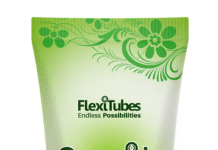
India’s largest multinational flexible packaging materials and solutions company Uflex has unveiled ‘Asepto’, its aseptic liquid packaging brand. The company’s aseptic liquid packaging manufacturing plant, which will commence operations in April this year, perfectly echoes the Indian government’s Make In India ethos .ASEPTO, derived from the word aseptic meaning sterile, resonates the idea of aseptic packaging, which ensures that food remains free from bacteria and other harmful microorganisms for a period of at least eight months under room temperature.
Some of the features of aseptic packaging include an aluminum foil layer, which is a strong barrier for O2 and light. The innermost layer of the packaging is made of polyethylene, which makes it possible to seal-through the pack. The paper layer provides stiffness, making it possible for the cartons to assume a brick shape thereby enabling maximum utilization of the available storage and transportation space.
Printing, creasing and punching of paper board is done on the printing machine. This is followed by the lamination of paper board on the extrusion machine with aluminum film and a different type of polyethylene. The rolls from the lamination machine are converted to rolls of smaller width as per the required size of packages (200 ml, 100 ml, 1000 ml, etc.).
The finished rolls are sent to the customer where they are run on the forming and filling line and the desired products (juices, milk, other dairy and distillery products) are filled and packed in the packages. Good surface material coupled up with superior graphics enhances the brand equity on retail shelf. The packaging increases the product’s shelf life and does away with the dependency on cold chains besides offering ease of handling for the marketers and consumers alike.
Launching ASEPTO, Ashwani Sharma, president and chief executive officer – new business initiatives, Uflex Limited said, “The aseptic packaging market in India is primarily classified into three segments—juices, dairy products and liquor. Packaging of flavored milk, other dairy items and liquor in aseptic packaging material will play a key role in propelling the growth of this packaging segment in the coming years both in India and overseas. Our total manufacturing capacity of 7 billion packs per annum will cater to 90% of the domestic market demand. In APAC, the market growth is around 7% while in India the growth has been in double digits for the last 3–4 years.
“Presently, the Indian aseptic liquid packaging market is growing at 17–18% per annum and the market is expected to double up in the next five years to approximately 20 billion packs per annum. Drawing parallels, China boasts of a tremendous growth story, which has already reached approximately 80 billion packs. In India, the growth potential is humongous. Aseptic package manufacturing is the next big thing that is bound to take Uflex to the next level of business excellence. We are all set to take off in the Indian market and position this business globally.”
Commenting about the investment that has gone into the upcoming plant, R.K. Jain, group president (Corp. F & A), Uflex said, “The aseptic packaging manufacturing plant is coming up on 21 acres of the 72 acre land parcel that Uflex has bought at Sanand, Gujarat. Upholding our commitment towards environmental sustainability, the aseptic packaging facility has been designed to be a zero discharge plant. Solar panels and passive architecture-envelop insulation have been used to preserve natural light besides conserving power energy.
We have invested approximately Rs. 580 crore (US$ 85 million) and once operational, the plant will employ around 250 people. Our total investment over the next 2–3 years is expected to the tune of Rs. 1,500 crore in a phased manner. This includes Rs. 580 crore towards setting up the plant. The balance will be utilized for modernization of manufacturing systems, processes and R&D towards yet better flexible packaging solutions using the most contemporary technology. From the current top line of US$ 1 billion, we are very positive of doubling up in the next 3–4 years.”
According to Ashok Chaturvedi, chairman and managing director, Uflex, “We will be also offering specialized filling machines to our clients as a well-rounded packaging solution for their liquid products. Our engineering business at Noida is designing and manufacturing machines with a filling speed of 7,500 packs an hour for a typical 200 ml pack. We already have a wide customer base to whom we offer fully integrated flexible packaging solutions. Now, with our aseptic packaging manufacturing plant going operational, getting orders from the existing clients for their liquid products will be a natural extension of our long standing business relationship of several decades.”










